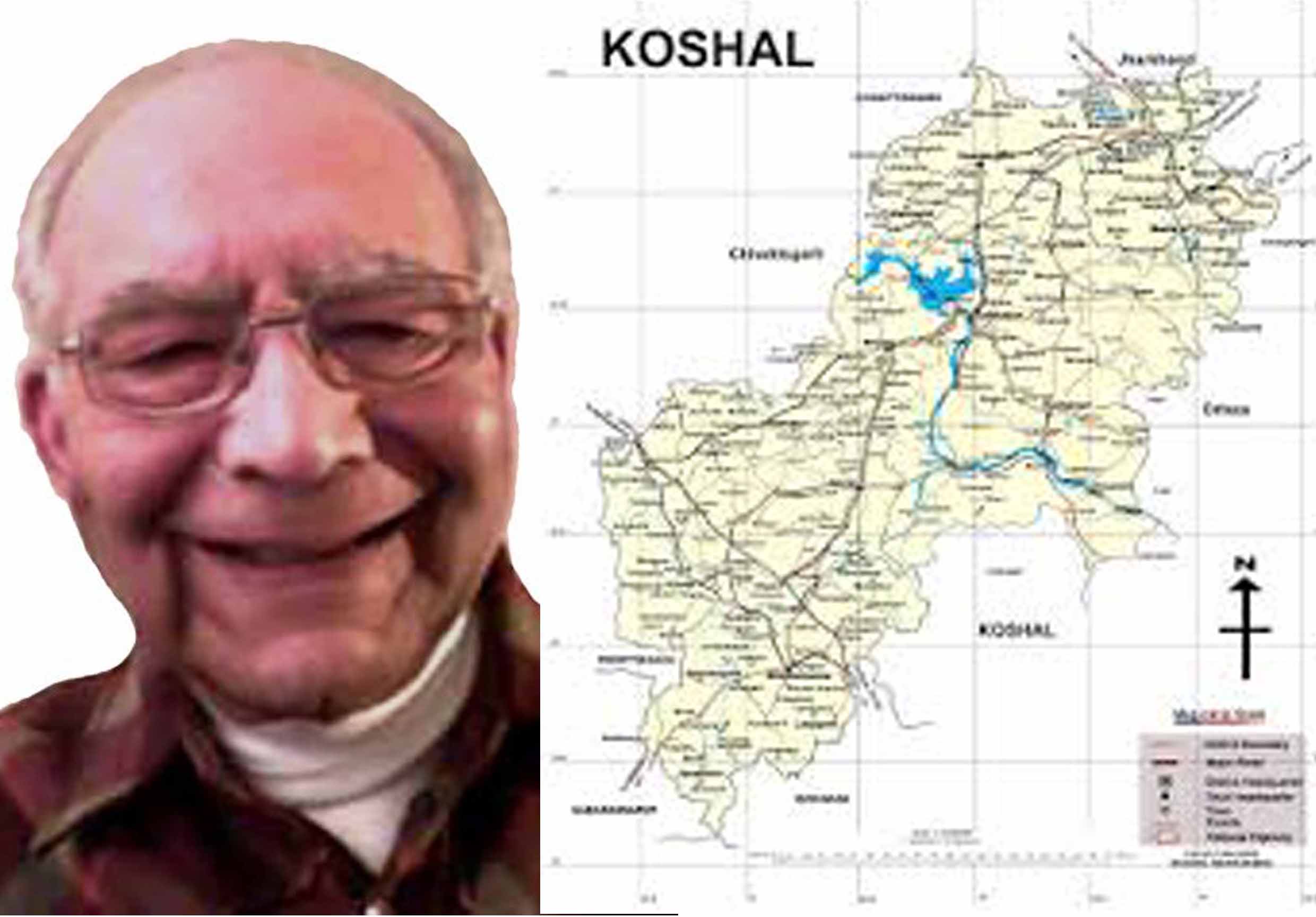In this note, I will illustrate some of the features of Koshali language which are derived from some of the sources described before. My challenge is how to deal with this vast topic in the body of this note. As a starter I urge readers to be familiar with three works which will be good context to this note: 1. Koshali Bhasha Ra Sankhipta Parichaya by Pragnadatta Joshi(Ed) Dr.Dolgobinda Bishi, 2.Sambalpuri Odia Shabda Kosha by Dr.Prafulla Kumar Tripathy, and 3.Sambalpuri Koshali Vyakarana by Dr.Nila Madhaba Panigrahi and Dr.Prafulla Kumar Tripathy. By necessity, I will give only samples and will not dwell on the theoretical possibilities.
From our Adivashi roots, we have inherited a vast vocabulary, especially connected to intimate connection with natural surroundings: Dangar {hill), Dungri (small hill), Jor (fast flowing rivulet), Unkia (morning light) etc. Other words; DhangrA( young man), DhAngri(young woman), Bui(young lady from a respected family), Bua(father), BhuskA, Bhuski(Fat man, Fat woman). One of the Siddhas named in Yogini Kosha (10 th Century?) is BhuskApA, probably a Koshali.
Pali source: UdurchA (Sanskrit equivalent Uddhata) to be found in Abhidharma Kosha of Trpitaka as one of the Akushala dharma.
Sanskrit: Kindrikari (to go around), Nani (young girl, Sk.: Nandini); ButA (Brutti), Bhuti, meaning wage in Koshali (Bhukti)
Northern source: Sentence structure where negative is placed before verb unlike in Odia: Ex. Mui nain Jae (Koshali) but Mu jibi nahi (Odia); Chanti (ant, pimpudi in Odia), etc.
Western Source: Gudi (temple) as used in Marathi/Bidarbhi, etc…
Tantrik Heritage: The word Puja used sometimes with added meaning, sacrifice (BaLi). In verb form, Pujidemi means I will chop the head off; from the same word, Pajei means sharpening the cutting instrument.
There are many words which are used with different meaning Koshali and Odia, such as NanA (father in some parts in coastal Odisha but father’s sister in Koshali), ChhenA (cheese in Odia but dried cow dung in Koshali.
Thus, archeological dig into Koshali language reveals stamp of most of roots of Koshali heritage. But vocabulary by itself does not make a language. It has to be means of communication in all day to day affairs. Koshali language has been shaped over centuries and has adequately served this purpose. It has different tone, timbre and rhythm, which distinguish itself from Odia, just as Odia has its own stylistic features… The rhythm of Koshali songs is markedly different from Odia. For instance, Champu fits so well to Odia, just as Dalkhai fits to Koshali. Singing Champu in Koshali will sound bad as Dalkhai in Odia.
How resilient is Koshali? In spite of aggressive Odianisation of Koshal region, Koshali not only survives but also thrives. Odia remains as second language for Koshalis who invariably speak Koshali at home as well as in their day to day social intercourse.
In 1969, Rajendra Lal Mitra argued in Cuttack: if Bengali could successfully replace Odia in the district of Midnapore then why it could not do so in the other three districts of the Orissa Division under the Bengal Presidensy as well which comprised of a population of barely 20 lakhs? (Source: A.K.Mishra in The Raj; Nationalists and Refrorms). Well, he was wrong, just as the attempt to extinguish Koshali in Koshal region has proved to be wrong. When Orissa was formed in 1936, it started with a population of 8,043,681 including the then undivided Sambalpur district but excluding princely states. Now the Koshal region has about 15 million people. So if less than 8 million or so people can be a linguistic unit, why 15 million people will have to be deprived of the similar status?



